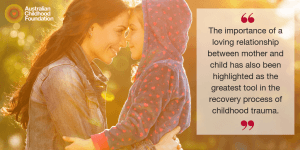
Short term work with children who have experienced family violence and homelessness
This blog post has been written by Cat Albert and Vanessa Gravina
of the Resilient Kids, Resilient Women project.
Prior to joining the Resilient Kids Resilient Women (RKRW) project, I was the type of practitioner that highly doubted the efficacy of short term interventions withtraumatised children. And to be honest, some days I still carry doubts.
After the Royal Commission into family violence, a significant amount of funding – $572 million – was injected into specialist services to begin providing what the Royal Commission proposed were the ‘most urgent recommendations’. The Resilient Kids Resilient Women project was one of these services, providing housing support and advocacy, therapeutic case management and counselling for women and children. Wrap around support would be provided by practitioners from Uniting Wesley, Safe Futures, EACH, and the Australian Childhood Foundation, all who would be offering three months’ involvement.
So what has short term work with parents and young people leaving family violence and entering the homelessness sector taught me about the ways we can support these clients in three months? Below are some of the things I have learnt so far:
- Children entering the homelessness sector lose more than just the breakdown of their family unit. These children frequently leave behind their home, town, school, best friends, extended family, pets and belongings.
- Having a home represents more than just four walls. Homes to children and adults signify safety, stability, routine, consistency, warmth, prosperity and the ability to function in their world as ‘normal’.
- Jumping from crisis property to crisis property forces children to remain outside of their window of tolerance, keeping their brains and bodies reacting in ways that the outside world often views as frightening, dangerous and ‘bad’.
- Remembering and restoring the warmth, love, connection, attunement, kindness, safety, and stability that the safe parent or carer can provide their children, goes a long way towards healing trauma symptoms. When strengthening relationships and increasing regulation, small visible gains can be made quite quickly.
Establishing care teams when providing short term work is essential. Good communication will ensure these services will hold this family long after you are gone. Having someone with access to funding also doesn’t go astray.
In my first few months working within this partnership, I had the pleasure of meeting Abby*, her mum and sister. On our first meeting, Abby asked me, “do you know how many schools I have been to”? When I replied that I didn’t, Abby informed me that she had been to nine different schools, she was currently in grade four and waiting to be enrolled in school number ten. Abby couldn’t remember the name of the previous school she attended, or exactly how long she went there for. What Abby did tell me is that she went out of her way to not make friends, because she knew she would just have to move and leave them. Abby stated that she wasn’t sure if she was looking forward to or intended to make friends at the next school, and would wait to hear how long she, her sister and her mum would be placed in their current property for.
Hearing stories like Abby’s has compelled me to reflect on ALL that children give up to flee acts of violence that are no fault of their own.
Working with complex families and systems in a three-month time frame has shown me the importance of wrap around supports that maintain the shared goal of increasing the safety and stability of the family unit.

The importance of a loving relationship between mother and child has also been highlighted as the greatest tool in the recovery process of childhood trauma. Helping a mother and child to reconnect and reattune, and for the child to feel loved and understood, supports the child to feel a sense of belonging and home with their mother. It is not necessarily a roof and walls that make a home, but rather a loving and connected relationship with the people around you. If we can support the significant adults in a child’s world to be better equipped to respond to their needs, then the child will feel safe and connected within a new environment. If a child is to move schools or homes, they will do so with a felt sense of safety and stability, allowing this experience to be integrated.
To date, we have observed the relational changes that can occur between a mother and child. With these changes, emerges a greater understanding and acceptance by the mother of how the child is functioning emotionally. With a greater understanding of what is going for the child, comes a deeper level of empathy from the mother. Trauma cannot necessarily be healed within three months, but supporting a mother and child to find a way back into each other’s heart is a start.
*Names have been changed to protect the identity of the people mentioned.
